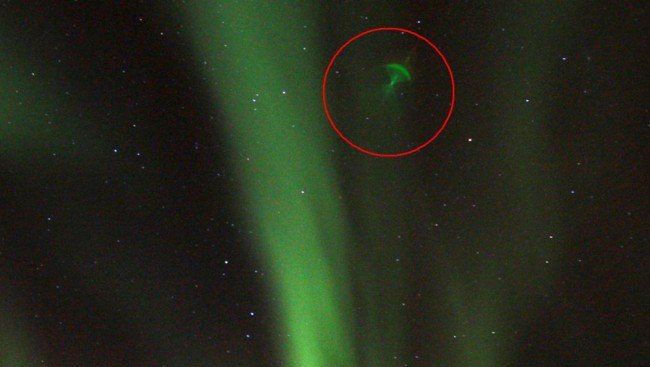
On Jan. 20, 2010, Per-Arne Mikalsen was photographing a vast aurora erupting over the northern Norwegian town of Andenes.
Because solar activity is on the increase, aurora spotters have many opportunities to see the Northern Lights. On this particular night the aurora was intense, stretching toward the southern latitudes of Norway.
In one of the photographs taken by Mikalsen was an “object” that couldn’t be identified. Although Mikalsen had taken several images at the same location, just one photo showed a mysterious green parachute-like object hanging with the main aurora. (This time, it appears that the Russian military was not involved in the making of this strange shape in the sky.)
At first it seemed easy to dismiss the object as a lens flare or a spot on the camera lens, but after further study it became clear that the answer wasn’t that simple.
Just more swamp gas, cool pic though.















Sorry, even though it states “It’s not that simple” – it still looks like a lens flare to me.
Nevertheless, living in Australia, I’ve never been close enough to a pole to have seen an aurora.
Street light.
I go with #7. That shape shows up in a lot of pictures.
It is probably not a lens flare because multiple individuals in multiple (different) locations took pictures of the same object in the sky at around the same time:
Person 1
Person 2
That is a good old fashion lense flare. Sorry to burst the bubble of the UFO enthusiasts. This happens often in pictures with 20-30 second exposure. Just a car-light in the distance is enough to cause light pollution.
I’ve never had it myself because I take extra caution to cover my viewfinder with a cap and also travel far away from light sources when I search for the aurora.
Many people get these. They’re quite common in aurora pictures taken with DSLR.